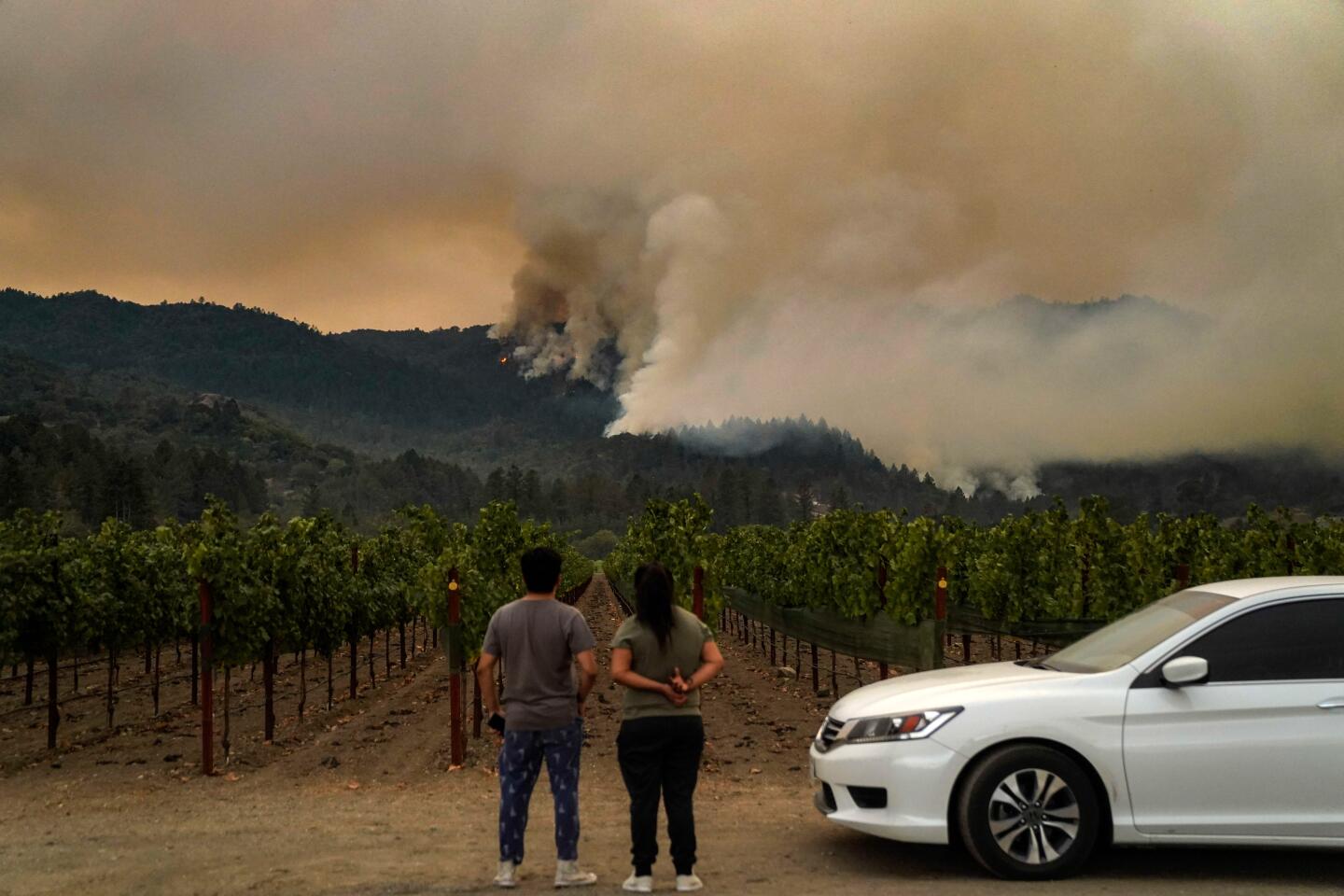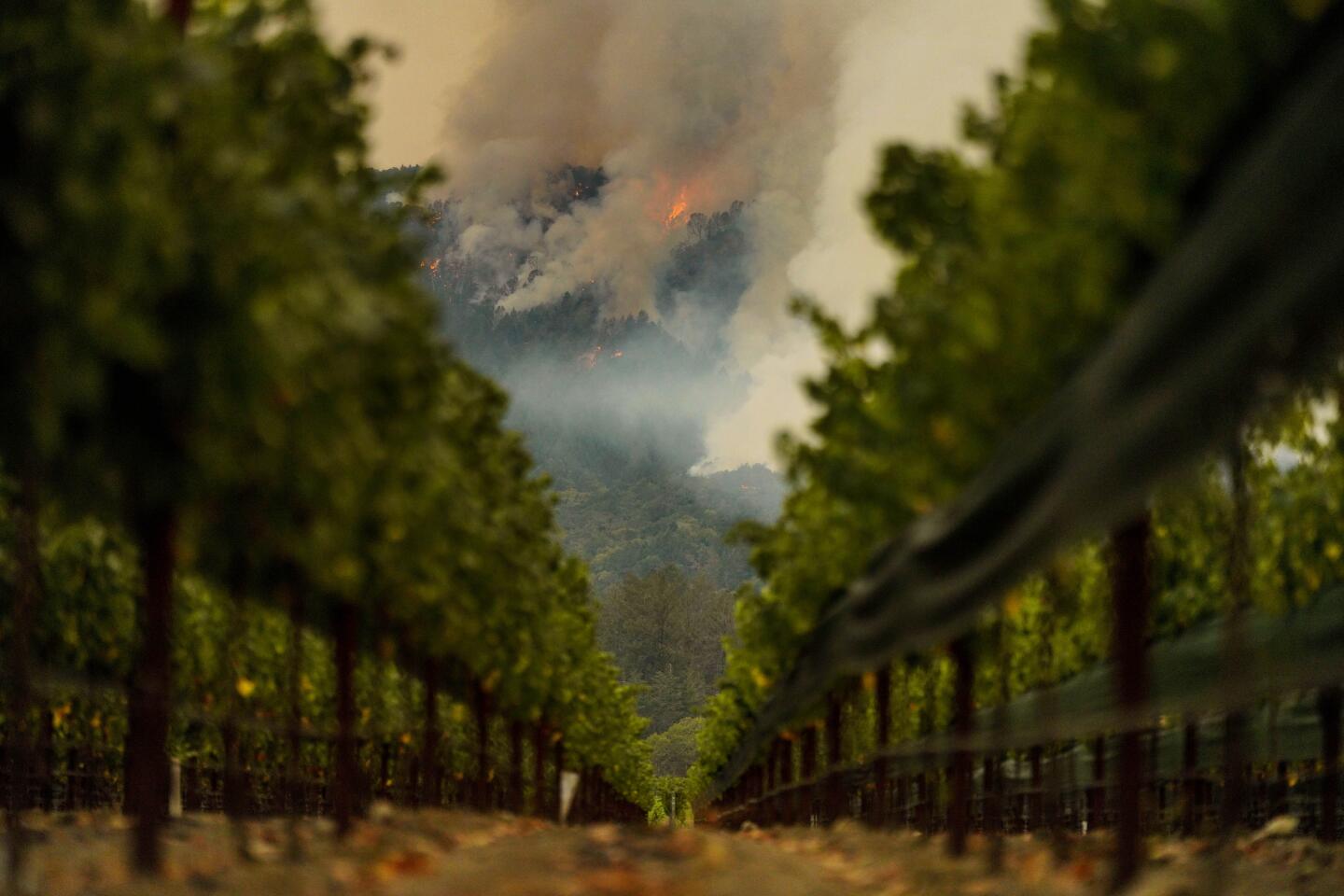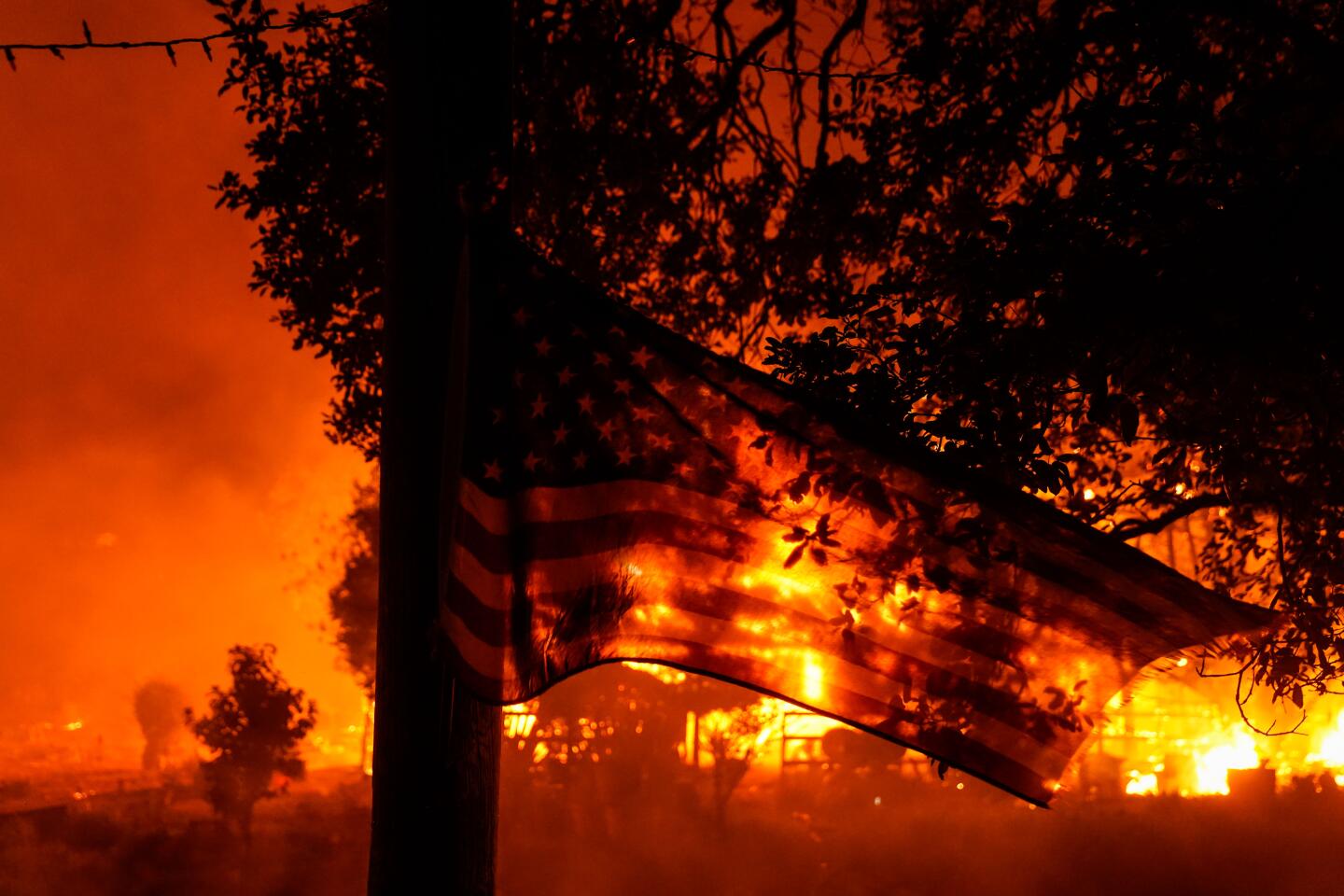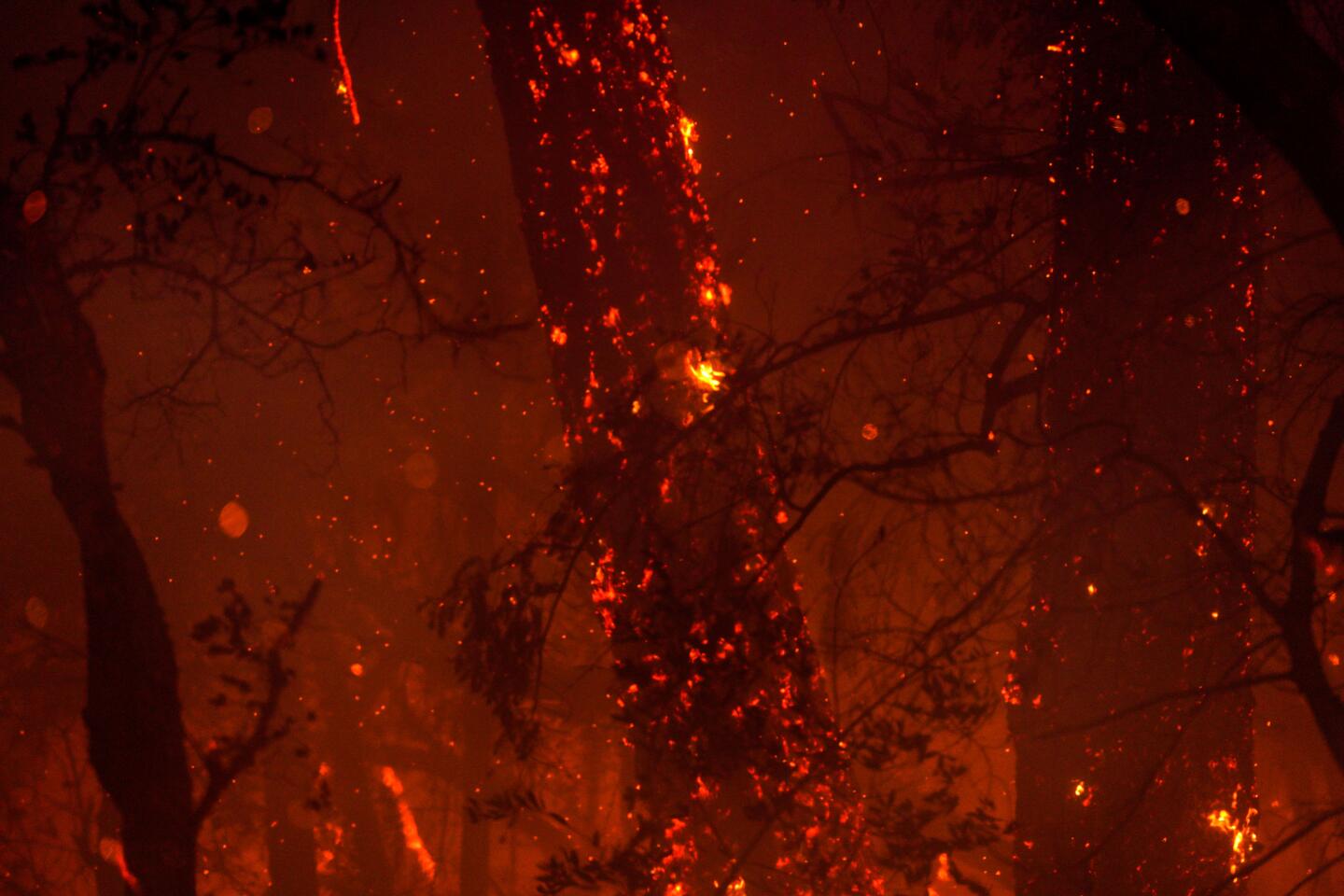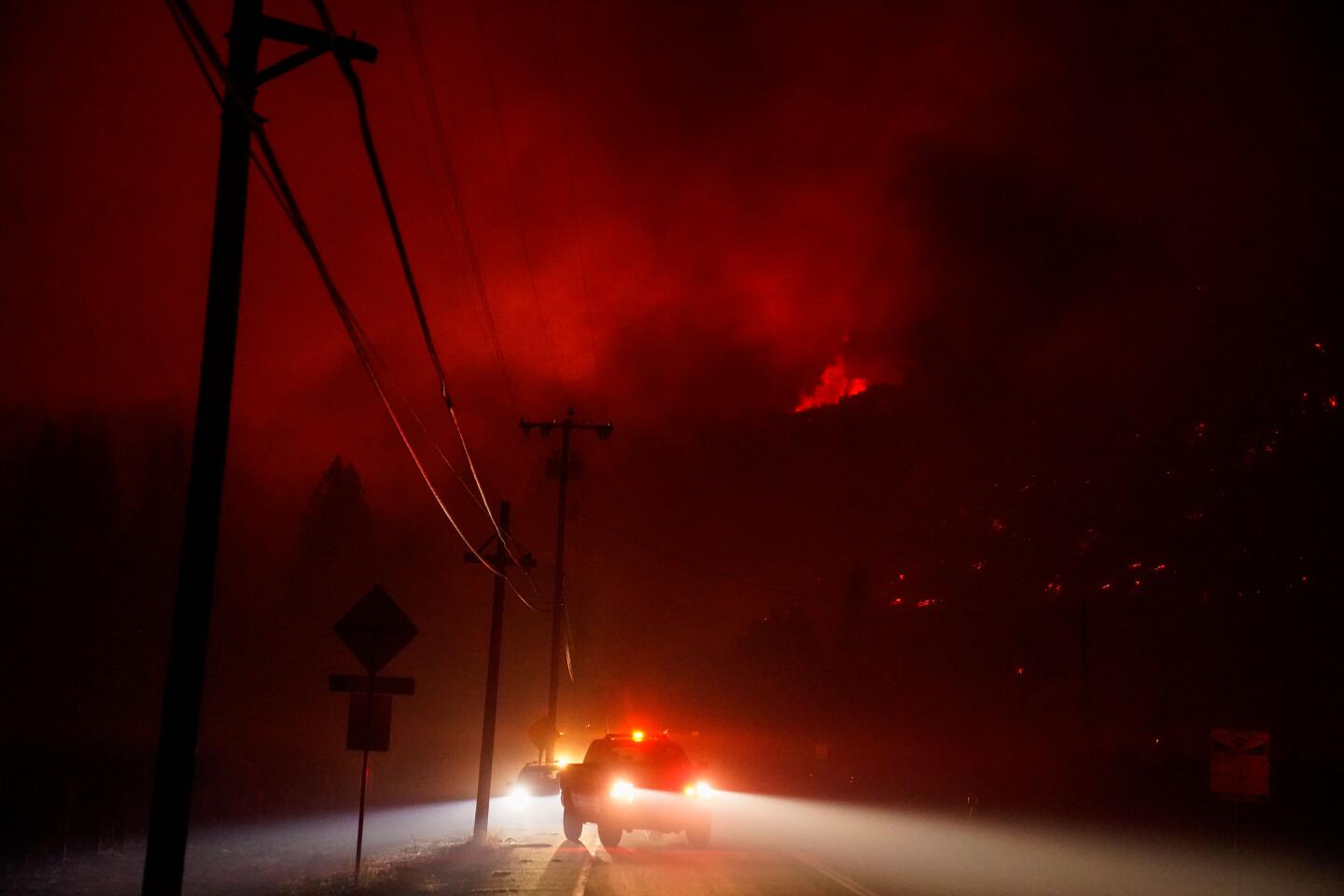How wine country became the epicenter for fires in California
- Share via
SANTA ROSA — Perhaps no part of California has felt more threatened by fire in recent years than the vast expanse of wine country and the Redwood Empire north of San Francisco.
More than 9,000 structures were lost and dozens of people were killed in 2017, when fires swept through Santa Rosa and surrounding communities. Last year, the Kincade fire menaced the region for weeks, putting nearly 100,000 people under evacuation orders. More than 50% of Lake County to the north of Santa Rosa has burned in the last decade.
For the record:
11:28 a.m. Sept. 29, 2020An earlier version of this story said the number of homes that burned in Santa Rosa’s Coffey Park in 2017 was 15,000. The correct number is 1,500.
You could be forgiven for thinking the region is due for a break. But on Sunday night, a fiery chain of events returned like a nightmare: a dry winter followed by a hot summer, which leads to a small grass fire on a windy autumn day spreading to an overgrown forest, where it feeds and transforms into a monster that races toward civilization.
Between the Tubbs and Nuns fires, which in 2017 burned almost 100,000 acres of trees and shrubs from Santa Rosa to Napa County to the east, and the 2019 Kincade fire, which scorched an additional 75,000 acres, most of the forested areas east of the city have seen flames sometime in the last few years.
But there was one wedge of land north-northeast of Santa Rosa — on the other side of Highway 12, above Trione-Annadel State Park, the Oakmont neighborhood and the Skyhawk Community development — that had no fire history going back 70 years. Its foothills were covered with fast-burning grass, chaparral and oak, and its rugged canyons and ridgetops were dotted with drought-stricken conifers.
That’s the area that burned through Sunday into Monday, sending tens of thousands of residents fleeing once again, as a 20-acre spot fire graduated to a 50-acre runner, then grew from 2,500 acres to 11,000 acres overnight.
Thousands of people are under evacuation orders as multiple fires burn unchecked in Napa, Sonoma and Shasta counties.
“It truly was one of the areas we had established ... as the greatest threat to Santa Rosa, and it was something we’ve been trying to secure grants for, to aid in future vegetation management,” said the city’s assistant fire marshal, Paul Lowenthal.
While the cause of the fire is under investigation, officials said Monday it was possibly sparked by embers from the Glass fire on the other side of the Napa Valley.
Winds Sunday night were blowing steadily between 40 and 60 mph across the North Bay hills, with some gusts up to 65 mph, said National Weather Service meteorologist Anna Schneider.
While it wasn’t remarkably warm Sunday night, the air was extremely dry because it was being pulled over inland mountains from the hot, dry Great Basin, sapping it of any moisture as it traveled downslope and across the valley floor.
When the winds reached the 20-acre spot fire on the other side of the valley, they pushed it west toward Sonoma County and uphill into that one unburned area of the forest where it could flourish.
“When you have a drought year, critical fuel moistures, ignition and a wind event, then it’s just kind of the recipe,” said Craig Clements, a professor at San Jose State University’s Fire Weather Research Laboratory. “It doesn’t matter what’s happening — when you have wind like that, things are going to spread and spot long-distance.”
California’s wine county is once again facing threats from wildfires.
The counties north of San Francisco and Sacramento have been battered by fire in recent years, and there is much debate about why.
The two largest fires ever recorded in California occurred here: the current August Complex, which began in Tehama County and is now approaching 900,000 acres, and the Mendocino Complex, which burned nearly 450,000 acres in 2018.
All the flames have residents on edge whenever the winds pick up.
Maria del Carmen, 33, lost her home three years ago, as did almost everyone else living in Santa Rosa’s Coffey Park, where 1,500 homes burned in 2017.
“I still get panic attacks,” she said. Terror shoots through her when she smells smoke, “until I can figure out there’s no fire here. Then I can relax.”
She had learned of the Tubbs fire when she woke in the night and looked out her window. So it was without question when Del Carmen rebuilt that she would sign up for emergency Nixle alerts on her cellphone. She stayed up almost all Sunday night, monitoring fire news and packing.
Fire stormed through California’s wine country Sunday night, destroying numerous homes and forcing thousands to flee, including in areas devastated by the Tubbs fire in 2017.
She decided to leave even without an evacuation warning for her home — she took off before dawn and headed early to work at a retirement center whose residents were being moved to a community shelter in nearby Petaluma.
A lot has changed in three years, she said. The evacuation “was better, even though the fire did come faster.”
Social media posts showed Sonoma County residents holding up chunks of ash and scorched bark as big as their hands, telltale signs of a wind-driven fire. Whereas grass and chaparral burn quickly and completely, the gray pine or foothill pine is known for launching red-hot embers as it gets hotter, spreading the fire farther, Clements said.
“It’s so unpredictable; you don’t know how fast that fire can move,” said Tyree Vander, a spokesman with the California Department of Forestry and Fire Protection. “It will outrun you.”
While Northern California is no stranger to autumn fires, they haven’t always carried the potential to grow as much as they do now, said LeRoy Westerling, a UC Merced professor who researches the interactions between climate, ecosystems and wildfires.
Development from the suburbs to the wildlands has increased and carried the fire risks of utility infrastructure along with it. But our changing climate and increasingly frequent fires are also a significant factor in the long term, according to Westerling. The state’s northern coast usually receives about two-thirds of California’s rainfall and has seen that turn into a relative trickle this year while the heat has been dialed up — a dangerous combination, he said.
“Climate change is giving [Northern California] a climate like Southern California, in terms of the degree of drying that the fuels undergo,” Westerling said.
If the fires come again and again, as they have the last few years, invasive species that are better adjusted to frequent fires will displace the native plants and trees that need more time to grow, Westerling warned.
But even as soon as next year, officials say, the fire threats could be back again for those in Santa Rosa.
“It did help clean up some of the forest as it burned through,” Lowenthal said of Sunday’s fire. “But I’ll just remind everyone: Grass grows back annually, and brush grows back pretty quick. ... Every year brings a new challenge.”
More to Read
Sign up for Essential California
The most important California stories and recommendations in your inbox every morning.
You may occasionally receive promotional content from the Los Angeles Times.
